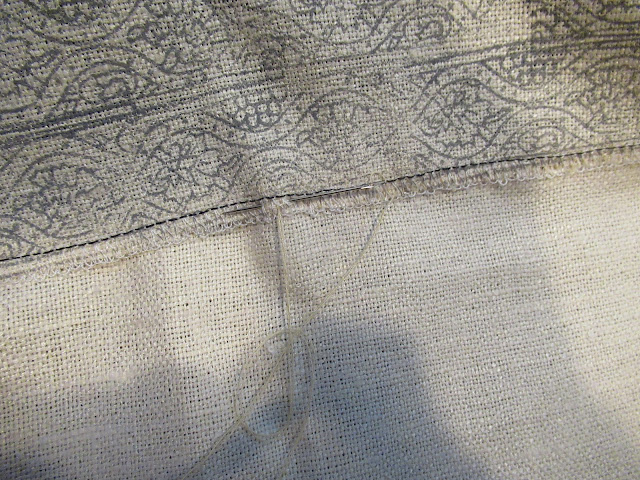My last post created a bit of a conversation. My friend Nancy was impressed with the shrug I had made and mentioned that she couldn't even thread a needle. I told Nancy that I could teach her how to thread a needle in a way that doesn't require the best vision. Ronna then asked that I give her a tutorial...so here it is.
I learned this method of threading needles from a needlepoint book when I was a kid. As you can imagine, threading a needle with yarn is not the easiest task. Once I learned this method I no longer wet the end of a thread with saliva and hope for the best. My eyes are no longer what they were when I was eleven or twelve and this method has worked for me even when I am due for a new prescription on my eyeglasses.
Some of the photos in this tutorial were taken by me as I was threading needles ( Yes, it is tricky to be both threading needles and taking photos of the process.)and some were taken by my husband so some of the thread is black and some is white.
It has taken me much longer to assemble these pictures and think about how to write this tutorial than it does to thread a needle. If you need any clarification just ask.
1.
Wrap your thread around the outside of the needle. You don't have to wrap anywhere near the eye.2. Pinch the thread tightly around the needle using your thumb and your index finger.
4. You will see a teeny little nub of thread between your thumb and index finger. (in the photo below it is white)
5. Put the eye of the needle over that teeny nub of thread. Below is an action shot with my needle getting into position.
and then put needle eye over the thread.
I am working on assembling Linda's tallit. The tallit itself is made out of one layer of fabric. The stripes are two-layered, black on one side and white on the reverse. It took me a while to figure out how to create a clean join on both sides of the fabric. My solution, figured out in a dream was to stitch each side separately to the main body of the tallit The seams will be covered in ribbon that I have block printed.
But back to tallit assembly. Another problem I discovered was that although I had carefully measured each strip and carefully cut them to the correct size when I finished the edges with the serger (which both cuts and wraps the raw edge with thread--this is an essential step because the silk I am using will shred if the cut edge is not serged) the serger does not cut in an exact line. (Grrr!)
So I was left with panels that didn't exactly line up.
The white panel is a smidge longer than the black. Another problem to solve.










Comments
Post a Comment
I love hearing from my readers. I moderate comments to weed out bots.It may take a little while for your comment to appear.